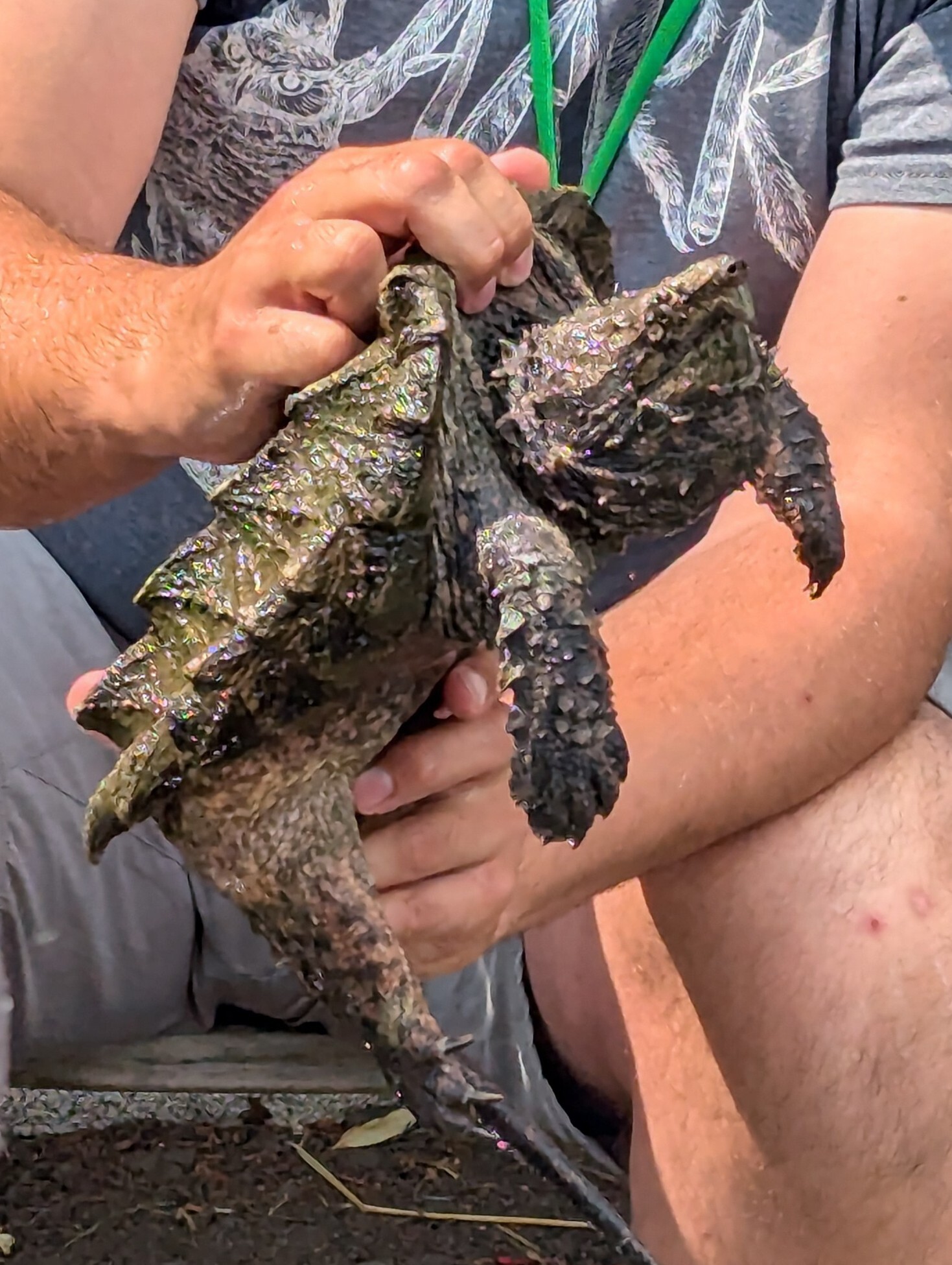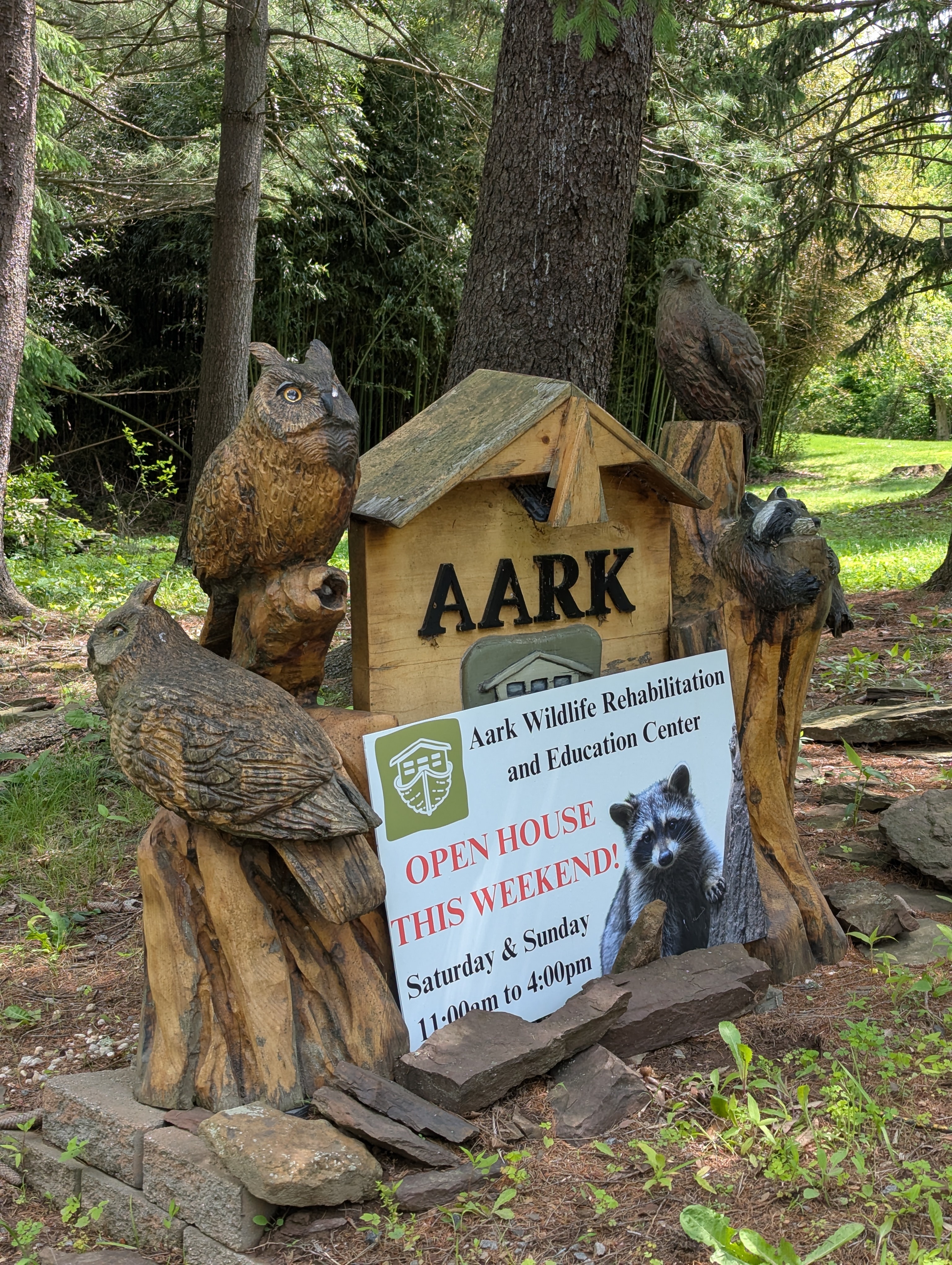Good! I thought this one was really good!
anon6789
I'm glad to hear old kitty had a good night! That is a great way to start the day! 😊
I thought the arm resting stick was a terrific accessory. The owl weighs nothing, but people don't really extend their arm out for hours on end, so it would be pretty impossible without it.
Helping there is truly an amazing experience. Everyone there is so kind and friendly and from all walks of life, and the animals teach you so much and you can't help but feel you're doing something positive.
Turtles


We've been getting lots of turtles recently. This is one of our snapping turtles. We just returned 100 the other week to the wild after raising them from eggs. Good thing they're gone, because 2 different people brought in more eggs today!
Songbirds


Not a current patient, but I'm pretty sure this is a former one! This jay hung out with me a few times. I was cleaning out the squirrel food, and first this bird landed right next to me on the own e frame, then it raided my trash bucket! It didn't want the veggies, but it did want some eggshell the opossums left behind!
I caught it later having serious issues with this person's antenna. It was hanging out on it for a while and kept pecking at it.
Tried to take pics of the big baby crow (I hear we got a raven also!) but we found an escapee bird just chilling out on the shelf! We had no idea where it came from. It didn't seem to be missing from any enclosure, but it was definitely a baby. I got too caught up helping get in set up in a new pen and I didn't want to get stuck there until it got figured out, so I snuck off once the bird was situated.
The nest of jays that got dropped off last week look like they doubled in size. Birds grow so fast!
Not a songbird, but 2 people were trying to get the turkey vulture to come out and socialize. Her name is Zsa-Zsa, and she is really pretty for a vulture, but she gets weirded out by people touching her feet, so they couldn't get her on the straps to come out.
Mammals



I was happy to see some of the raccoon babies get to go outside, though I learned it's because they're causing too much mischief inside! They were climbing and grabbing each other and wrestling, and the one stretched out all cute.
They're in the rabies vector pens, hence then being behind two layers of cage, so that's why the photos stink. It's for everyone's safety. Raccoons can carry rabies for a very long time, and if anyone without a pre-exposure rabies vaccine touches them, the animal has to get tested for rabies, which does not go well for them!

This photo stinks too, but that's a bat. This both was very crowded so I didn't get to see anything, but I enjoyed that so many were enjoying the bat. I also heard the bar last had a very cool bat tattoo, but I didn't see that either.
I also heard there was a very friendly woodchuck that loved talking to all his visitors. That sounded super cute, and they're another rabies vector animal, so I haven't been around them at all either.
I need to get those shots, but they're almost $1000! I believe there's an annual test as well to make sure you keep up your antibodies. That's serious stuff.
Owls!


Baby GHO is fledging!
Coming in to clean and feed it, after its normal hissing and snapping, it flapped off its perch and tried to hang from the roof, but as that didn't work, it just hung out by the water dish and resumed complaining at me incessantly. I'm glad it seems to be doing so well!


This is Harry, one of our permanent residents. As you can see, he can't see so great, and he shares a pen with our other Screech, Steve. They are very reclusive, so even though I'm in their pen frequently, I see almost no signs of their existence other than some whitewash or an uneaten mouse. They were the ones I was hoping to see the most today for that reason. He's a cutie, and I do recall seeing him when I came to the open house as a guest 6 years ago.
I saw Elliott the GHO in his pen, but he must have not been in a social mood, as he never came out. Even on good days he's only good for short appearances.
I learned he carries grudges, and his main handler doesn't do stuff he hates like trimming his beak because then he wouldn't work with her.
You're close! It is a mini sky tiger, but its range doesn't quite cover Korea.

That one looks a little ... challenged.... 🤪
It takes more than a big slab of injection moulded plastic to take me down! 😁💪
It went well, beside me crushing my finger 5 minutes after I got there. The little tool shed's door did not stay open as I thought it did...
I was able to take a few pictures and collect some fun stories that I'll post tomorrow. We really had a beautiful day and what sounds like a record turnout. They sounded very pleased with the money we raised, and it's going to help us out big time.
I will continue thinking happy thoughts for senior!














And doing the head bob every now and then! 😁